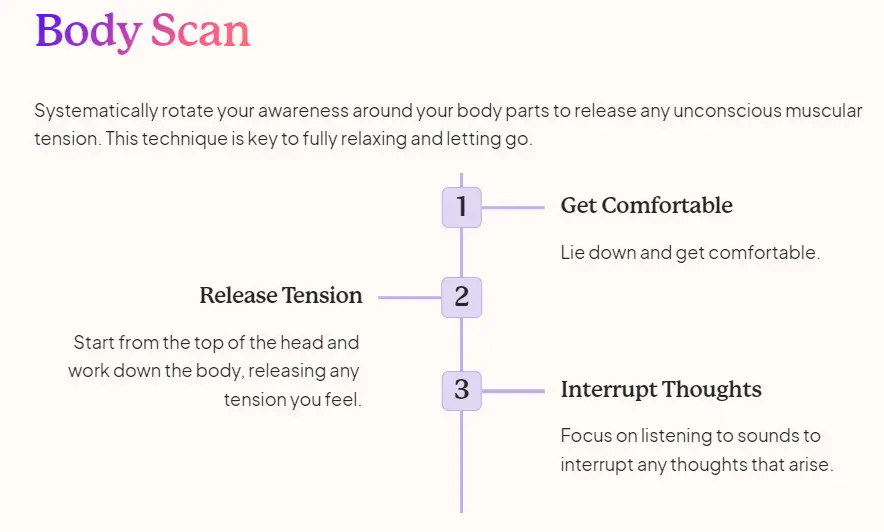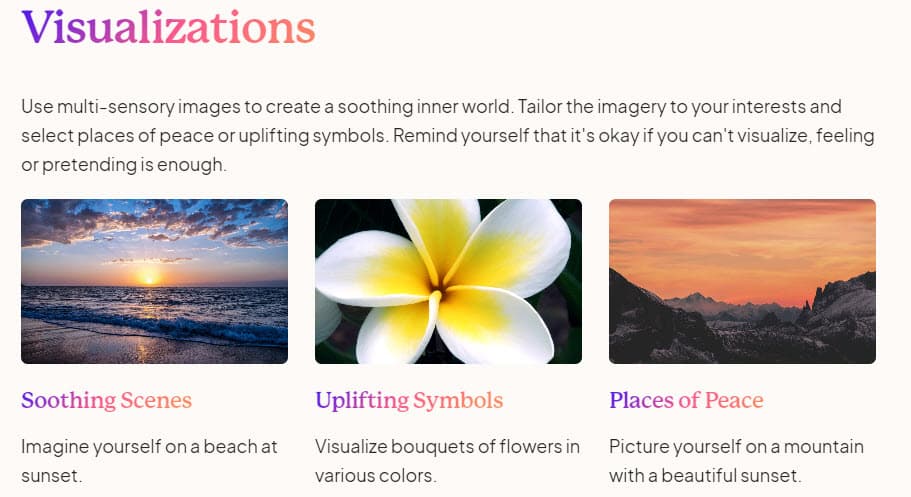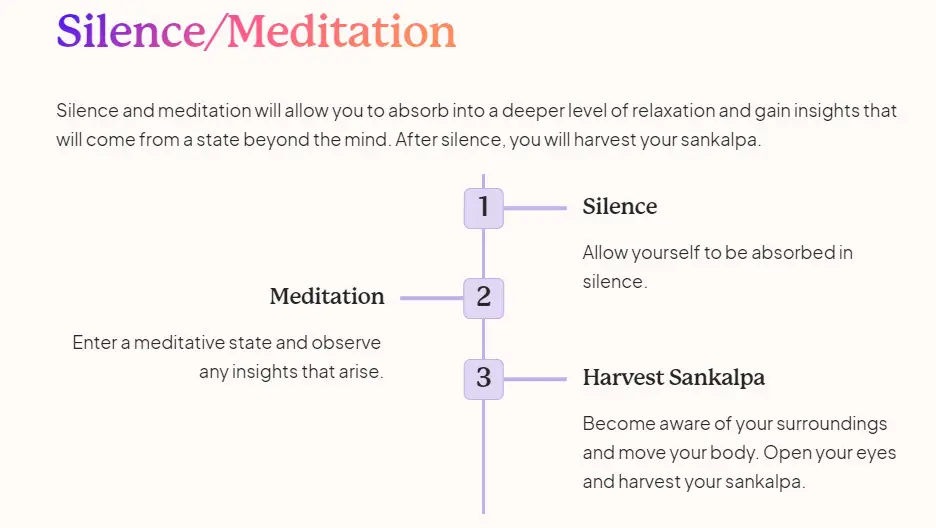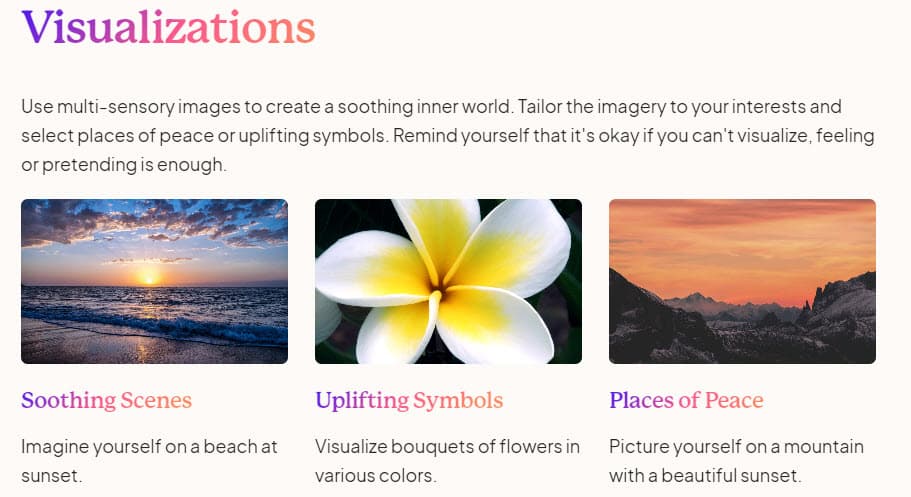Yoga nidra is a meditation technique done lying down. It leads to deep relaxation and can induce hypnogogic states between waking and sleeping. At Sleep Dragon we also teach you how to facilitate your own Yoga Nidra practice. This is a primer below, and there are several nuances. Below are the basic stages and principles of Yoga Nidra.
- There are 8 main stages: You start off with preparatory exercises to relax the body and mind, stating a sankalpa (resolve), body scan, breath awareness, awareness of sensations, visualizations, silence/meditation, and ending the practice.

- The stages follow the model of the 5 koshas or sheaths: physical body, pranic body, mental body, intellectual body, and bliss body.
- Body scan involves rotating awareness through the body parts systematically. Breath awareness involves observing the natural breath. Sensations involve focusing on opposites like hot/cold. Visualizations calm the mind. Silence allows meditative experiences.
- The sankalpa is a key component planted at the beginning and harvested at the end. It is a firm resolve stated as a short positive phrase. You can see this through our Sleep Dragon meditations we always plants specific intentions.
- The instructor’s voice should be soothing, strong, and lead people deeper into relaxation while staying awake. Silent spaces are important between instructions.
- Yoga nidra has many therapeutic benefits. It can help with sleep, anxiety, addiction, pain, and more by inducing deep relaxation and revealing unconscious patterns.
- Writing your own scripts involves choosing techniques for each kosha, managing timing and pacing, and structuring the experience to allow meditative states to unfold. Sample scripts are provided.

DETAILS AROUND 08 MAIN STAGES OF PREPARATORY EXERCISE
- Preparatory exercises: Get comfortable lying down, release tension, interrupt thoughts by listening to sounds.
- Sankalpa: Plant the seed by stating your resolve 3 times.
- Body scan: Rotate awareness systematically around the body parts. Releases physical tension.
- Breath awareness: Observe the natural breath without controlling it. Calms the pranic body.
- Sensations: Alternate between opposites like heat/cold. Disidentifies from cravings.
- Visualizations: Imagine soothing scenes and objects. Calms the mental body.
- Silence/Meditation: Allow meditative absorption and insights to arise. Go beyond the mind.
- Ending: Harvest the sankalpa, become aware of surroundings, move the body, open eyes.

The body scan and rotation of awareness is a key technique for releasing unconscious muscular tension. Breath awareness is critical for managing the pranic body and emotions. The sensations and visualizations induce a detached equanimity. The silence allows meditative states like Samadhi to arise. And the sankalpa at the end has a deeper impact on the psyche after going through this sequence.

The instructions should be paced with the right speed and spacing to allow people to internally experience each stage. It is important to remain awake and aware throughout. The end goal is a profound state of relaxation along with heightened awareness.
THE ENDING

EXAMPLES AND ANECDOTES FROM SLEEP DRAGON STUDENTS
On Body Scan:
A student named Priya had chronic tension in her shoulders and neck. During the body scan, as she brought awareness to each part of her upper body, she could distinctly feel where she habitually held tension. This allowed her to consciously release those muscle groups and experience a deeper level of relaxation.
On Sankalpa:
James was trying to complete writing his first book. He used the sankalpa “I am disciplined, focused, and prolific in my writing practice.” Staying with this resolve over several months helped him develop more positive writing habits and finish his book. James is actually not a student of Sleep Dragon but is a friend who also has practiced in the Bihar school of Yoga
On Breath Awareness:
Maria tended to get anxious in social situations. Focusing on her breath helped center her in the present moment. She realized her thoughts were triggering shallow breathing that further exacerbated her anxiety. Deep conscious breathing allowed her to remain calm.
On Visualizations:
Shruti had trouble sleeping and quieting his overactive mind. Visualizing serene nature scenes like a mountain lake helped absorb his attention and induced a more relaxed, sleepy state. He began looking forward to these mini guided meditations at bedtime.
On Silence:
During the silence, Fatima felt a profound sense of inner peace. Her constant inner chatter faded away, and she experienced the joy of simply being. This motivated her to incorporate more silence into her daily life.

VIZUALISATION AND SENSATION
On Sensations:
- Go back and forth between opposite sensations like heat/cold, heavy/light, pain/pleasure
- Spend 30-60 seconds focused on each sensation separately
- Guide them to imagine and exaggerate the sensation
- For heat – imagine being in a hot furnace, focus on manipura chakra and pingala nadi
- For cold – imagine being in arctic cold, focus on vishuddhi chakra and ida nadi
- For heavy – imagine body is made of stone sinking into the floor
- For light – imagine floating up off the floor, body is light as air
- For pain – recreate a past pain or emotional distress
- For pleasure – recreate a pleasurable sensation or blissful state
- Oscillating between opposites balances mind/emotions
- Disidentifies from cravings and aversions to any particular sensation
On Visualizations for Yoga Nidra
The key is creating a relaxing but absorbing inner world for the mind to focus on, instead of its usual chatter. This induces serenity and calm. Creative visuals are powerful for taking the mind inward.

- Use simple, vivid, multi-sensory images
- Imagine soothing nature settings – beach, mountains, forest, lake
- Places of peace – temple, garden, cabin in woods
- Uplifting symbols – sunrise, flowers, saints
- Include all senses – sights, sounds, smells, textures
- Use imagery tailored to their interests if you know them
- Combine visuals with guided meditation narratives
- Allow time between images for visualization to unfold
- Remind them it’s okay if they can’t visualize – feeling or pretending is enough
- Avoid disturbing imagery before sleep – keep it uplifting
- Visualize the breath as light entering the body to make it tangible
Some tips for allowing meditative absorption and insights to arise during the silence stage of yoga nidra:
– Give enough time for the experience to unfold – 5-10 minutes for longer practices
– Guide them to observe their inner space behind closed eyes
– Encourage an attitude of open receptivity
– Tell them not to latch onto thoughts, just witness calmly
– Suggest focusing on the ‘third eye’ space between and behind the eyes
– Remind them not to sleep, stay aware yet relaxed
– Share that insights may arise suddenly and spontaneously
– Explain that deep peace, joy or transcendence may occur
– Advise not forcing anything and letting the silence speak
– Use imagery like infinite ocean or clear night sky to aid absorption
– Play soft ambient music or bells to support the experience



